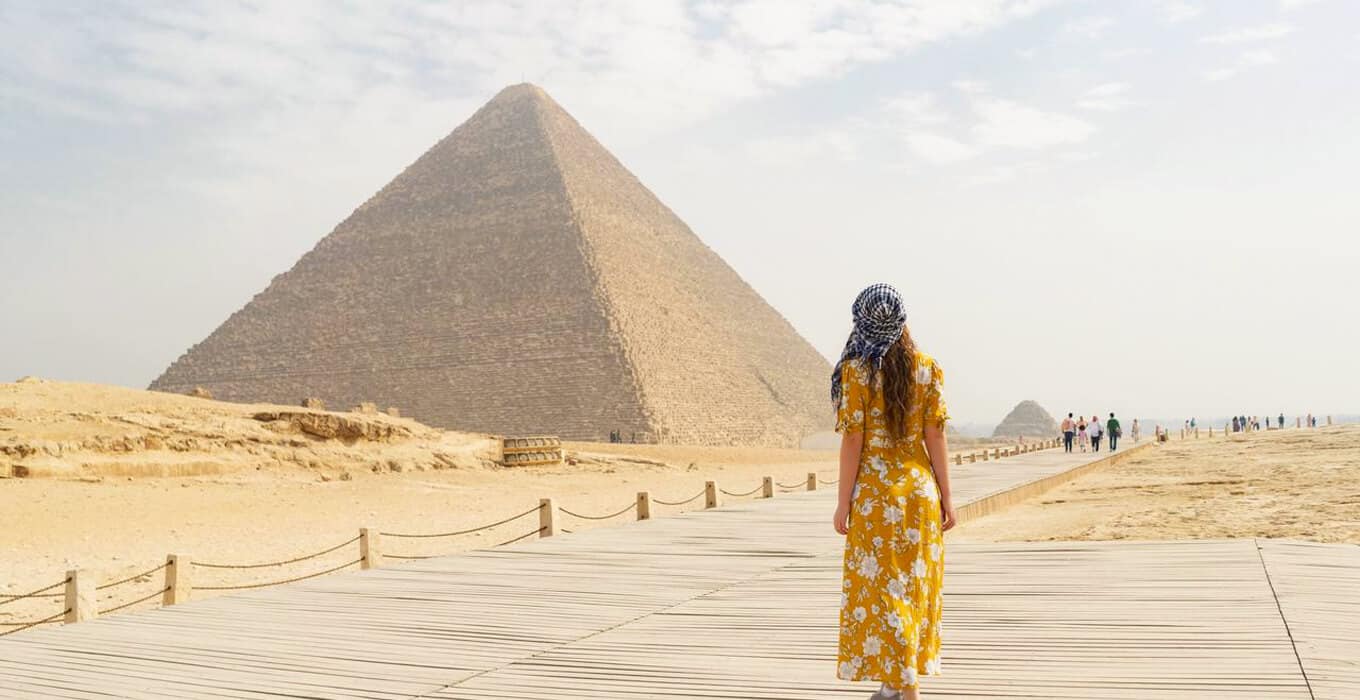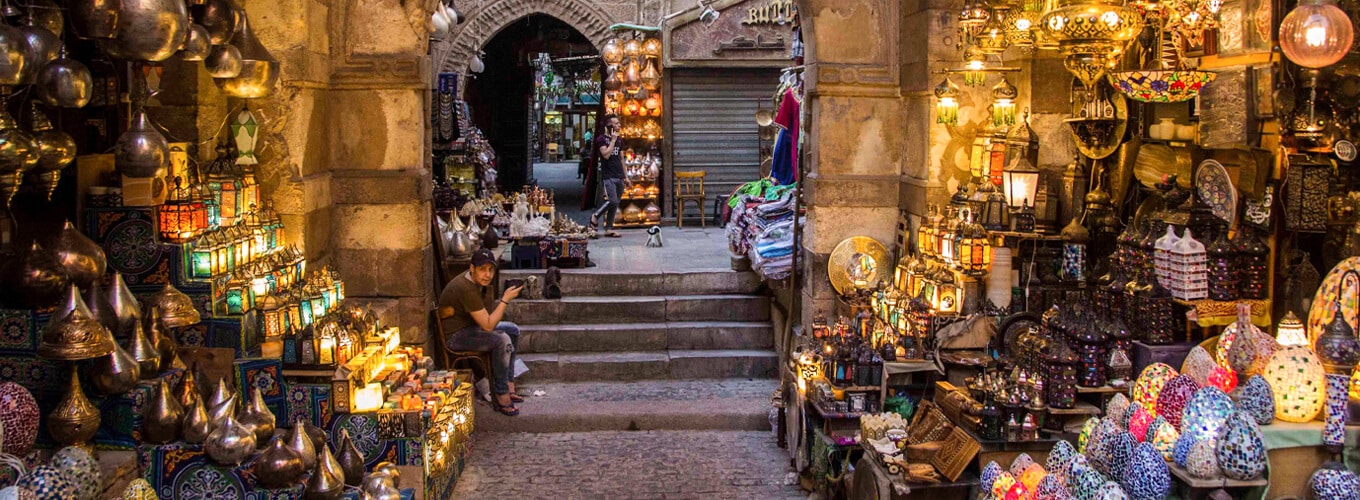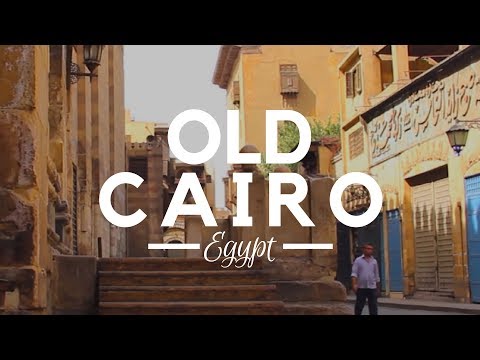Step into the heart of Egypt’s past in Old Cairo. Here, the sounds of old civilizations echo through the streets. This place is a mix of Coptic Christian, Islamic, and ancient wonders. It’s a UNESCO World Heritage site by the Nile River.
But what secrets does it hold? Get ready to explore Cairo’s history and solve mysteries that have intrigued people for ages.
Key Takeaways
- Explore the ancient heart of Egypt in the UNESCO-listed Old Cairo district
- Discover Coptic Christian landmarks like the Hanging Church and St. Sergius Church
- Marvel at the Islamic architectural masterpieces, including the Cairo Citadel and Ibn Tulun Mosque
- Immerse yourself in the vibrant, centuries-old Khan el-Khalili souk and its Fatimid-era mysteries
- Uncover the treasures of ancient Egypt, from the Pyramids of Giza to the artifacts in the Egyptian Museum
The Iconic Pyramids of Giza
The Pyramids of Giza are famous landmarks in Old Cairo. They include the Pyramids of Cheops, Chephren, and Mykerinus. These structures show the amazing skills of ancient Egyptians.
The Pyramids of Cheops, Chephren, and Mykerinus
People can go inside the Pyramid of Cheops. But, the tunnels are very narrow. The Great Pyramid of Cheops was once 147 meters tall. Now, it’s 138 meters high. It took about 100,000 workers to build it, says Herodotus.
Close by, the Pyramid of Chephren and the Pyramid of Mykerinus are also part of the Giza complex. They are a bit smaller but still show great engineering.
The Sphinx: Guardian of the Pyramids
The Great Sphinx watches over the pyramids. It has a lion’s body and a king’s head. It’s 73 meters long and 20 meters high. The Sphinx is a symbol of the Pyramids of Giza.
Studies in the 1980s and 1990s found out more about the workers’ areas. They showed how much work and resources went into building these ancient wonders.
The Pyramids of Giza and the Great Sphinx are a UNESCO World Heritage site. They show the huge importance of these ancient structures. They still amaze people from all over the world with their design and history.

Exploring Saqqara and the Step Pyramid
Saqqara is more than just the Pyramids of Giza. It shows how ancient Egyptian tombs changed over time. The Step Pyramid of Zhoser is a key site, built around 2700 BC. It was made by Pharaoh Zhoser and his architect, Imhotep.
The Step Pyramid of Zhoser
The Step Pyramid of Zhoser is the oldest stone building still standing. It changed Egyptian pyramid design. It has six levels and is 62 meters tall. It was the model for all later pyramids, including the ones at Giza.
At the Zhoser complex, you can see the South Tomb and the Serdab. The South Tomb has a 30-meter tunnel and a pink granite chamber. The Serdab has a statue of Pharaoh Zhoser, showing his ka or spirit.
The Ancient Capital of Memphis
Close to the Step Pyramid is Memphis, an ancient capital. It was alive for over 3,000 years and was a center of power. Now, it has many ruins, temples, and statues that show its past greatness.
“Saqqara is an active archaeological dig site with almost yearly discoveries, offering a more peaceful exploration experience compared to the crowded Giza Pyramids.”
| Key Facts about Saqqara and the Step Pyramid |
| – The Step Pyramid of Djoser is considered the oldest complete stone building in the world |
| – The Step Pyramid of Djoser was built around 2670-2650 BC, making it about 4,700 years old |
| – The Step Pyramid of Djoser consists of six mastabas of decreasing size atop one another |
| – The Pyramid of Unas in Saqqara contains the ‘Pyramid Texts’ inscribed on its walls |
| – Saqqara served as the main necropolis for the first few dynasties of Ancient Egypt |
The Egyptian Museum: Treasures of the Pharaohs
The Egyptian Museum in Cairo is full of ancient Egyptian artifacts. It has over 100,000 pieces from the Pharaonic era. This is the oldest archaeological museum in the Middle East.
There are also other artifacts like the 4th dynasty figures with inlaid eyes. And the Amarna exhibits are very captivating.
| Key Facts About the Egyptian Museum | Details |
| Total Artifacts | Over 170,000 |
| Historical Range | Pre-Dynastic Period to Graeco-Roman Era (5500 BC – AD 364) |
| Exhibition Galleries | More than 100 |
| Total Area | More than 0 square meters |
| Total Visitors | More than 0 |
The museum houses many treasures, including the Menkaure Triads, a statue of the child Ramses II, and the god Horus made of granite.
“The Egyptian Museum in Cairo is a must-see destination for anyone fascinated by the rich history and culture of ancient Egypt. It is a true treasure trove that offers a glimpse into the grandeur of the pharaohs.”
If you love history or are simply curious about the ancient world, the Egyptian Museum in Cairo is the perfect place. You will be amazed by the beauty and mystery of the pharaohs’ treasures.
Old Cairo: The Coptic Christian Heritage
In the heart of Egypt’s ancient capital, Coptic Cairo shines as a symbol of Coptic Christianity’s lasting legacy. This area, by the Nile River, has some of the oldest churches in the world. Each church has its own unique story.
The Hanging Church and St. Sergius Church
The Hanging Church sits on top of an old Roman fortress in Babylon. It’s thought to have been built in the 3rd or 4th century. This church is famous for its beautiful wooden ceilings and a pulpit that seems to hang in mid-air.
Close by, the Crypt of St. Sergius Church is a place of great importance. It’s said to be where the Holy Family found safety after fleeing to Egypt.
The Ben Ezra Synagogue and the Cairo Geniza
The Ben Ezra Synagogue is a key spot in Coptic Cairo, showing its religious diversity. It’s named after a 12th-century rabbi and holds the Cairo Geniza. This collection of Hebrew and Aramaic manuscripts is a peek into the Jewish community’s life in medieval Egypt.
These historic sites draw visitors from all over, sharing the deep Coptic Christian heritage of Old Cairo.
Islamic Cairo: Mosques and Monuments
Old Cairo is full of stunning mosques and monuments. They show the rich Islamic heritage of the area. From the famous Cairo Citadel to the tall Alabaster Mosque, Islamic Cairo is a treasure of architecture and culture.
The Cairo Citadel and the Alabaster Mosque
The Cairo Citadel sits on a hill and was made in the 12th century by Sultan Saladin. It has many amazing buildings, like the 19th-century Alabaster Mosque. This mosque has Ottoman-style spires and domes, making it a key part of Islamic architecture.
The Mosques of Ibn Tulun and Sultan Hassan
In Islamic Cairo, there are more mosques worth seeing. The 9th-century Ibn Tulun Mosque has a special spiral minaret. It’s a rare find in Islamic architecture outside of Iraq.
The Mosque and Madrasa of Sultan Hassan from the 14th century is also a sight to see. It has a beautifully decorated prayer niche. This shows the deep Islamic heritage of the area.
“Islamic Cairo’s mosques and monuments stand as enduring symbols of the region’s deep-rooted Islamic culture and architectural prowess.”
The Cairo Citadel, Ibn Tulun, and Sultan Hassan mosques show the rich history and beauty of Old Cairo. They are a mix of history, art, and spiritual belief.
Old Cairo: Exploring the Fatimid City
The heart of Old Cairo is in its alleys and medieval architecture. Founded in 969 AD, the Fatimid city is full of history. Bab Zuweila, one of the last three gates, shows us the past. Near it, the Mosque of al-Muayyad offers beautiful views from its minarets.
Close by, the Wekalat el Ghoury complex is in the Tent Makers Bazaar. This market has shops with colorful, appliquéd fabric.
Khan el-Khalili: The Souk of Cairo
The Khan el-Khalili, once a key trading spot, is now a lively souk. It’s full of souvenirs and local crafts. Visitors can walk through narrow streets, looking at stalls and shops.
These places sell traditional Egyptian goods like spices, textiles, jewelry, and antiques.
“The Khan el-Khalili is a must-visit destination for anyone exploring the Fatimid Cairo. It’s a true feast for the senses, with the sights, sounds, and smells of a bustling medieval souk.”
The Khan el-Khalili shows the rich history and culture of Old Cairo. It lets visitors see the city’s past as a trade and commerce center. Whether you’re looking for souvenirs or just enjoying the vibe, the Khan el-Khalili is a key spot in this amazing city.
Ancient Cairo’s Mummy Treasures
Under Old Cairo’s busy streets, a hidden history waits. It’s filled with ancient Egyptian mummies and their precious amulets. A 2,300-year-old mummy found in the Egyptian Museum’s basement has shown us this. It has many protective objects that tell us about the Egyptians’ afterlife beliefs.
The “digital unwrapping” of this “golden boy” mummy found 49 amulets. Many were made of gold or semi-precious stones. These amulets were placed in and under the wrappings to help the dead in the afterlife. A golden tongue amulet and a golden heart amulet were found, showing the Egyptians’ respect for speech and the heart’s importance in the afterlife.
This find is just a small part of ancient Cairo’s mummy treasures. Recently, 22 royal Egyptian mummies and 17 royal sarcophagi were moved to the National Museum of Egyptian Civilization. Famous pharaohs like Ramses II, Seti I, and Tuthmosis III were among them. Also, four queens, including Hatshepsut, were moved.
Cairo is still revealing its deep history. The mummy treasures from the past amaze and inspire us. From hidden amulets to the royal mummies’ parade, these treasures show us the ancient Egyptians’ beliefs about the afterlife. They give us a peek into the lasting legacy of this amazing civilization.
You can find more information about amulets at Ancient Egyptian Amulets
Old Cairo: A Tapestry of Cultures
Old Cairo is a place where many cultures meet. It’s in the heart of Egypt’s capital. Here, the stories of ancient Pharaohs, Coptic Christians, and Islamic leaders come together. It’s a special spot in Multicultural Cairo.
People can dive into the Coptic Christian world in “Misr al-Qadhima.” This area is the historic center of Christianity in the city. Visitors can see the Hanging Church and St. Sergius Church. These places show the strong faith of Egypt’s Coptic people.
But there’s more to Old Cairo than just Coptic culture. The city has beautiful Islamic mosques and landmarks like the Cairo Citadel and the Alabaster Mosque. These show the beauty of Islamic rule in the area.
Old Cairo also has hints of Roman and Byzantine times. You can feel the city’s history in its narrow streets and busy markets. Places like Bab Zuweila and Khan el-Khalili souk tell stories of Cairo’s past.
Walking through Old Cairo takes you back in time. You’ll see how different cultures have mixed here. This mix of Pharaonic, Coptic, Islamic, Roman, and Byzantine cultures makes Cairo special. It’s an experience you won’t forget in Multicultural Cairo.
Conclusion
Old Cairo is a place full of history and culture. It lets visitors see the city’s past and its many cultures. You can see the famous Pyramids of Giza and the narrow streets of the Fatimid city.
Visitors can learn about the Coptic Christian history, see amazing Islamic buildings, or find ancient mummies. This makes a trip to Old Cairo both deep and memorable.
The city’s mix of cultures and religions shows its strong spirit over the years. You can explore the Coptic Christian sites like the Hanging Church. Or visit the Ben Ezra Synagogue to learn about the Jewish community.
Islamic sites like the Cairo Citadel and Mosques of Ibn Tulun and Sultan Hassan show off the Mamluk and Fatimid eras’ beauty. These places are a must-see.
Old Cairo is a top spot for tourists, drawing people from all over. It’s a living piece of Egypt’s history, where different cultures meet. It’s perfect for anyone who loves history, culture, or just wants a deep travel experience.
So, if you’re planning a trip to Egypt, don’t miss Old Cairo. It’s an experience you won’t forget.
Read our related articles:


